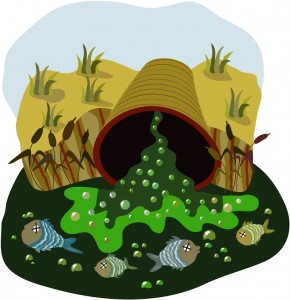Surviving an Ohio EPA Wastewater Inspection
There are several different types of wastewater inspections that involve:
- Compliance Evaluation Inspections (a non-sampling inspection verifying permittee’s compliance with applicable permit self-monitoring requirements, effluent limits and compliance schedules)
- Reconnaissance Inspections (a brief visual inspection of the permittee’s treatment facility, effluents, and receiving waters. This is a preliminary overview of a permittee’s compliance program).
- Industrial User Inspections (In depth inspections that involve physically inspecting every pipe discharge and outfall, looking at daily water use and waste water generated, review of SPCC plans and SWPPP plans, review of lab reports, review of any issues with waste water treatment plant, checking calibration records of monitors)
- Compliance Sampling Inspections (inspectors take representative samples to verify the accuracy of the self-monitoring program and reports)
The common goal of all these is to assess compliance with terms and conditions of the NDPES permit or indirect discharge permit.
Wastewater discharges can include, but are not limited to, spent solutions, cooling water, equipment cleaning, rinse waters, process solutions, APC blowdown, purge/flush wastes, general housekeeping and storm water.
- Expect an opening meeting to discuss any changes made since the previous inspection (to the waste stream and treatment system modifications) and any upcoming changes to the waste stream or treatment system (ie. increase in volume or change in chemistry).
- Following the opening meeting there will be a facility walk through which should be process based and will focus on material use, water use and wastewater generation.
- The inspector will also want to look at the conveyance systems – drains, sumps, pits, pumps, sanitary and storm sewer lines, site drainage and outfalls. Finally the inspector will review ancillary operations including material handling and maintenance.
- The facility visit will also include review of the facility equipment and on-site wastewater treatment devices or systems, examining of the permit records (management plans, equipment calibrations, sample results),viewing of the effluent flow meter and sampler location and potentially a compliance sampling event.
Be prepared for an Ohio EPA Wastewater Inspection by:
- Understanding your permit and water use (waste water generation practices)
- Knowing the locations of sewers and drains and where they go
- Having records available which document treatment, management and disposal of waste streams
- Avoiding surprises
- Communicate problems
Common wastewater inspection violations include:
- Unauthorized indirect or direct wastewater discharges without a permit
- Discharging process wastewater to a septic system, dry well, cesspool or other injection well
- Installing new wastewater treatment equipment without a PTI
- Failure to apply for and obtain a storm water permit
- Failure to provide periodic sample results
- Failure to provide notification for exceeding permit limits
- Failure to ensure proper sampling (preservation, type, method, records)
- Failure to operate/maintain/calibrate wastewater treatment equipment
Avoid these common mistakes and violations and your inspection should go smoothly.
Turn-Key Environmental offers a host of services for Ohio Industrial Compliance.


